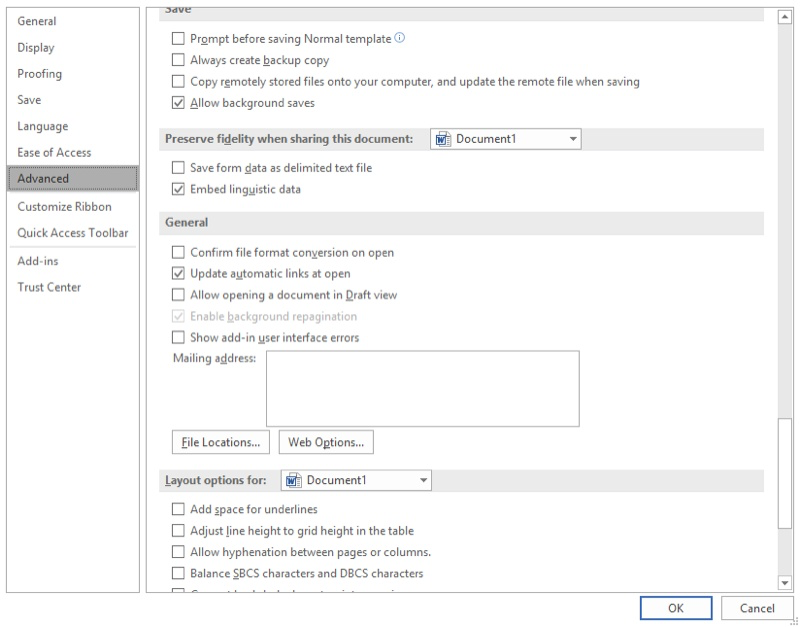Please Note: This article is written for users of the following Microsoft Word versions: 2007, 2010, 2013, 2016, 2019, 2021, 2024, and Word in Microsoft 365. If you are using an earlier version (Word 2003 or earlier), this tip may not work for you. For a version of this tip written specifically for earlier versions of Word, click here: Automatically Updating Fields and Links.
Written by Allen Wyatt (last updated March 15, 2025)
This tip applies to Word 2007, 2010, 2013, 2016, 2019, 2021, 2024, and Word in Microsoft 365
Stephanie wondered if there is a way in Word to force the updating of all fields and links in a document when either opening or saving (closing) the file. She knows that she can force updates prior to printing, but she was looking, specifically, for the open or close method of updating.
You can automatically update both fields and links when you print a document, but Word treats the two items differently when you are opening a file. Word provides a way to always update your links when opening a document. You can do this by following these steps:

Figure 1. The General area of the Word Options dialog box.
That setting should make sure that all your links are always up to date. If you want to update the fields when the document is opened, you'll need to use a macro to accomplish the task. Specifically, you'll need to use either an AutoOpen or AutoClose macro, depending on whether you want to update the fields when the document opens or closes. The following is an example of an AutoOpen macro you can use.
Sub AutoOpen()
With Options
.UpdateFieldsAtPrint = True
.UpdateLinksAtPrint = True
End With
ActiveDocument.Fields.Update
End Sub
Note that the macro makes sure that the options are set to force updating the fields and links when printing occurs, then it updates all the members of the Fields collection in the document. If you, instead, wanted to update the fields at closing, you could use this macro:
Sub AutoClose()
ActiveDocument.Fields.Update
End Sub
This macro is much shorter because there is no need to set the update-on-print options when you are exiting the document.
Note:
WordTips is your source for cost-effective Microsoft Word training. (Microsoft Word is the most popular word processing software in the world.) This tip (978) applies to Microsoft Word 2007, 2010, 2013, 2016, 2019, 2021, 2024, and Word in Microsoft 365. You can find a version of this tip for the older menu interface of Word here: Automatically Updating Fields and Links.

Do More in Less Time! An easy-to-understand guide to the more advanced features available in the Microsoft 365 version of Word. Enhance the quality of your documents and boost productivity in any field with this in-depth resource. Complete your Word-related tasks more efficiently as you unlock lesser-known tools and learn to quickly access the features you need. Check out Microsoft 365 Word For Professionals For Dummies today!
The style area is an esoteric feature of Word that allows you to easily see the styles applied to the paragraphs in your ...
Discover MoreScreenTips can appear with or without shortcut keys displayed in them. Here's how to control whether they appear or not.
Discover MoreWant to see how your document will look before it's printed? Or, do you want to see what things will look like if you put ...
Discover MoreFREE SERVICE: Get tips like this every week in WordTips, a free productivity newsletter. Enter your address and click "Subscribe."
There are currently no comments for this tip. (Be the first to leave your comment—just use the simple form above!)
Got a version of Word that uses the ribbon interface (Word 2007 or later)? This site is for you! If you use an earlier version of Word, visit our WordTips site focusing on the menu interface.
Visit the WordTips channel on YouTube
FREE SERVICE: Get tips like this every week in WordTips, a free productivity newsletter. Enter your address and click "Subscribe."
Copyright © 2026 Sharon Parq Associates, Inc.
Comments